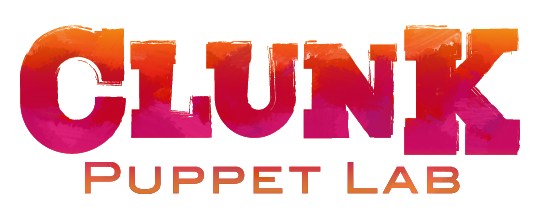
As a Puppetry Director, I work with actors/puppeteers to bring puppets to life in an engaging, moving and surprising way:
- I develop and refine puppet movement, animation, and choreography
- I troubleshoot possible challenges for the puppeteers with puppet design and offer design solutions.
- I work with puppeteers to develop their physical relationship to the puppet which includes techniques to minimize physical strain on the body of the puppeteer.
- I work closely with the director of the show to help actors/puppeteers develop the puppet character and voice.
Masterful puppet animation is vital to a performance
The puppet is an extension of its operator, who must see through its eyes, hear through its ears, breath and speak through its mouth to bring it to life. This process creates images infused with feeling and tension, used to develop a reciprocal relationship between the puppet and the audience. The audience’s investment in the performance becomes more active as they participate in the process of bringing the puppet to life through suspension of disbelief. It places them in closer proximity to the action of the story, engaging them on a visceral and empathetic level, causing the resonance and impact of the experience to be more personal.
– Shawna Reiter, Artistic Director of CLUNK Puppet Lab
Puppetry Director Credits:
Puppetry Director, “Nightfeed” (Best of Toronto Fringe, Patron’s Pick Tarragon Extaspace, Outstanding Overall Production Ottawa Fringe Festival) Toronto and Ottawa Fringe 2019
Toronto School of Puppetry Intensive (2019), Guest Puppetry Director
SpringWorks PuppetWorks Mini Festival (2019), “Puppet School”, Guest Puppetry Director
Casteliers Puppetry Festival (2017), “Caliban Deconstructed”, Puppetry Director
Humber College Puppetry Intensive (2014, 2015 2016), Puppetry Director
Springworks (2015), “How I Became Invisible”, Puppetry Director
Why Puppetry?
I consider the primary characteristic of puppetry to be a belief in the hidden life of the inanimate object; revealed through the design of a character which is then animated with movement and gesture, becoming infused with human-like yet otherworldly qualities. The puppet is an extension of its operator who must see through its eyes, hear through its ears, breath and speak through its mouth bringing it to life as an ‘other being’ in the moment of performance. This process creates images infused with feeling and tension, used to develop a reciprocal relationship between the performing object and the audience. The audience’s investment in the performance becomes more active as the puppet acting as an empty vessel begs the commitment of the observer’s ego. It places them in closer proximity to the action of the story, engaging them on a visceral and empathetic level, causing the resonance and impact of the experience to be more personal.
Puppet performance goes hand in hand with puppet construction and design, as it contains an organic intuitive process of discovering a character through explorative improvisation, and by channelling the natural rhythms of movement and physical traits of the puppet itself. As an art form puppetry defies the boundaries of a single discipline, and thus demands that artists, designers, writers, and performers move beyond traditional collaborative methods and work toward an understanding of the life of that puppet.
– Shawna Reiter, Artistic Director
